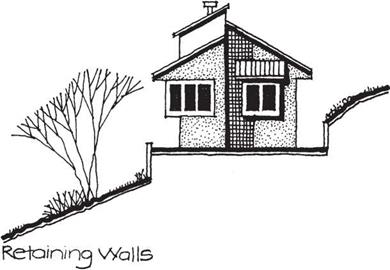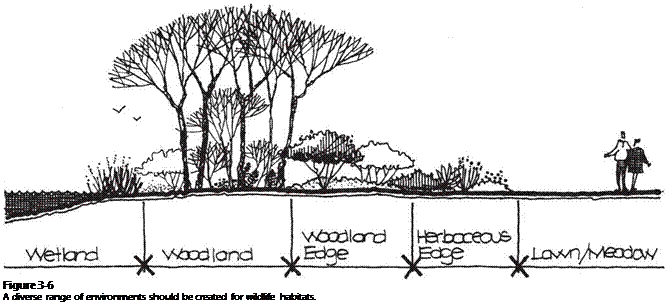Birds, animals, insects, and microorganisms live in a range of habitats from within the ground to tree canopies above. These habitats are easily disrupted or removed when a house and associated landscape are inserted into a natural setting. Even the well – intentioned objective of preserving selected habitats or forms of wildlife while removing others can cause environmental harm because of the interdependent aspect of the life in a natural setting.
Wildlife habitats can be maintained by fulfilling the previous strategies for minimizing site impact. In addition, different habitats should be preserved if the site permits. Open lawn or meadow areas, perennial and annual gardens, woodland edges composed of shrubs and small trees, woodlands, wetlands, and so on should all be present in temperate climates to create diverse environments for a range of living
|


y*t}IK-aut I ewer fesel

|
Figure 3-4 All structures and paved areas should be located outside drainage ways. |
|
Figure 3-5 A vegetation buffer should be located at the edge of all water bodies to filter surface runoff. |
 |
organisms, as in Figure 3—6. These varied types of environment will translate to other habitats in dissimilar climatic regions. Diversity is essential to a healthy ecosystem because it supports interdependence and is more resistant to disease and stress. Retained natural habitats should be as large as possible and connected to each other within the site or to others in adjoining sites to promote species diversity and the movement of flora and fauna within them (Figure 3—7). Fragmented and isolated habitats should be avoided.





